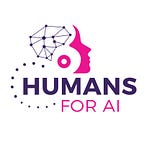Machine Learning’s impact on the Finance Industry
Written by Pavitra Srinivasan
With the advent of Machine Learning (ML), there is no doubt that various industries are experiencing disruptive changes in their day to day operations and finance and banking sector is no exception to this. Development of algorithms that can demonstrate human-like thinking has challenged the long held belief that people still trust human intuition over machines when it comes to making decisions about their money. This article provides an overview of various applications of ML in the financial sector.
Portfolio management
People who are actively involved in stock trading might have come across the term “Robo-Advisors”, which are a bunch of rule-based algorithms that take into account the user’s financial targets, assets, age and income to make appropriate investment decisions and diversify investment portfolio. This concept is similar to “If this then that” (IFTT) based procedures. Given the ability of these algorithms to incorporate real-time market conditions, robo-advisors are receiving vast attention from investment firms. These algorithms comprehend the market trends and use it as a means to reach the client’s financial target by recalibrating the investment decisions. The best part is that they are available around the clock to accommodate user preferences.
Algorithmic Trading systems
Algorithmic trading is the process of using computers that are programmed to follow pre-defined set of instructions for performing transactions in order to generate profits at a speed and frequency that is hard to achieve for human traders. The rules for such trade are based on timing, price, quantity etc. The high speed computational capabilities of this algorithm supports handling of numerous transactions and are hence rightly called as high frequency trading. Machine learning techniques such as classification algorithms and recommendation systems form the core of these systems. Similar to the portfolio management systems discussed earlier, these systems are also capable of performing real-time calibrations. Due to minimized human interventions, these systems are less prone to miscalculations and take away the emotional aspect of the decision making.
Insurance/Loan Underwriting
Most insurance companies as well as banks rely heavily on historical data of individuals or institutions when performing credit checks for underwriting and fail to account for most recent data points pertaining to their clients. This is a potential area where machine learning algorithms if implemented can be a game changer. These algorithms can be trained across thousands of customer cases and can learn to identify clients who are most likely to default on their payments. They can also monitor customer’s financial status changes and process these changes in real-time to indicate changes in credit line and coverage. Recommendations from ML based systems can act as an additional layer of filter while processing loan applications.
Fraud detection
The proliferation of online banking and trading mandates the need for highly secure systems. This makes fraud detection a top priority for financial institutions. Fraud detection is a crucial task for banks in order to gain the customer’s credibility and hence will receive greater attention in the age of machine learning. Anomaly detection is a class machine learning algorithms that can constantly track the data over time and identify abnormal data points. These systems can then alert the banks of potential fraudulent activity. Such algorithms are already in use for credit card fraud detections. Besides the above mentioned applications, financial institutes are in constant look out for technologies that will help them deal with long term decision making with lesser uncertainty and predictive analytics comes in handy to meet this objective. With greater sophistication and more secure systems, there seems to be endless opportunities for machine learning applications in the financial world. These future developments rely on creating greater awareness among consumers about the benefits that come along with machine learning adoption without having to treat it as a black box.
References:
http://www.investopedia.com/articles/active-trading/101014/basics-algorithmic-trading-concepts-andexamples.asp https://www.techemergence.com/machine-learning-in-finance-applications/ http://www.economist.com/news/finance-and-economics/21722685-fields-trading-credit-assessmentfraud-prevention-machine-learning
About the Author:
Pavitra is a founding member of Humans For AI, a non-profit focused on building a more diverse workforce for the future leveraging AI technologies. Learn more about us and join us as we embark on this journey to make a difference!
